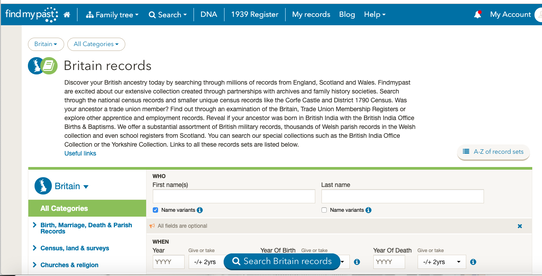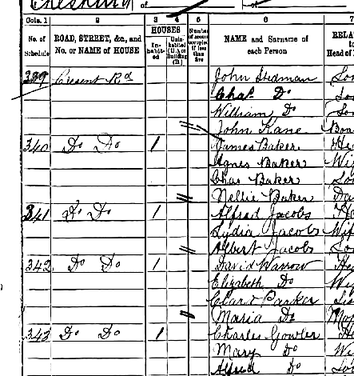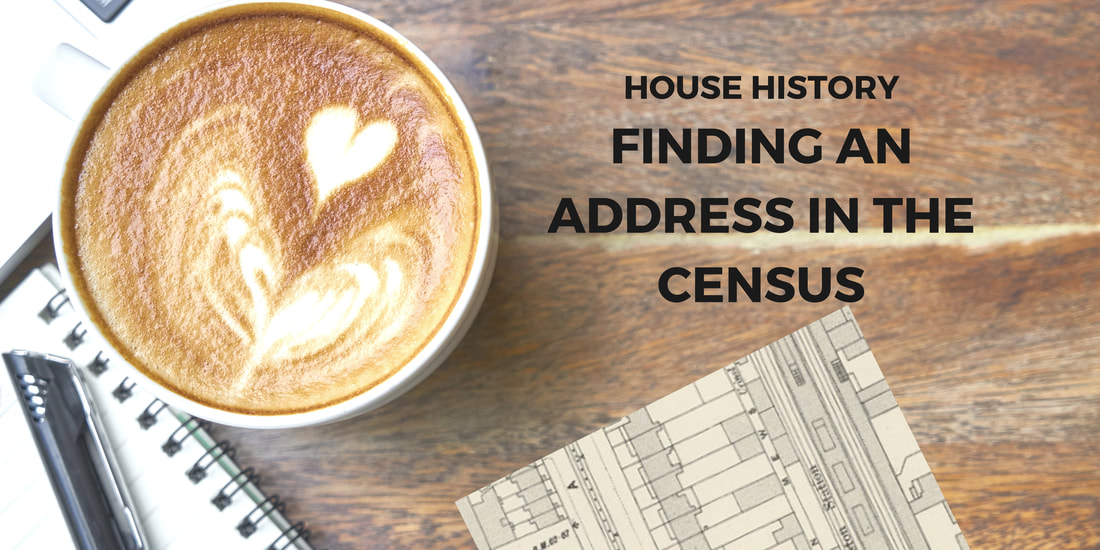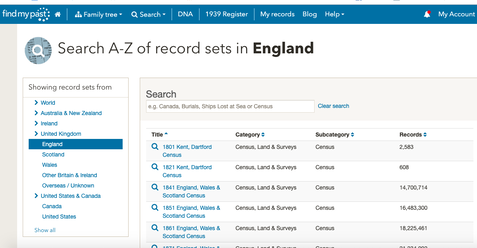House History Blog
|
An important part of tracing your house history is discovering more about the people who lived in it and how the house formed a backdrop to their lives. Finding out more about the celebrations, dramas and tragedies of the people who lived in your house- discovering their stories - is uniquely linked to the history of the house. One of the key places to start is the census.
The census has been taken every ten years since 1801 when the government wanted to ascertain how many men were available to fight the Napoleonic wars at that time. The idea stuck and with the exception of 1941 and in Ireland 1921 is a key resource for the house historian. However, the first census which contained personal information of use to the historian is the 1841 census. Generally, the census is only available to view after 100 years so from 1841-1921 it is possible to discover who lived in every house in the country. The census can be searched by address and we show you how and provide some useful tips. We are showing examples of census data from Find my Past which has an excellent facility for finding an address but other paid for sites also have census information. For more info see our Census page 
Go to the 'A-Z of Record Sets' drop down from the 'Search Records' menus.
Next enter the year of the census in the search bar or scroll down to find the individual census year you require 
.
The required census page will then load and you will see the option to search by address for that census with the 1901 and 1911 census years, there is an 'Address' tab on the search page that would then need to be clicked to search by address 
If you cannot find the address first time, check the registration district as it may have changed and examine old maps and street directories online for clues that may help you locate the house in the census. The street directory may give you a resident’s name which you could also use in your search.
Search for ‘St’ as well as ‘Street’, ‘Road’ and ‘Rd’, ‘Avenue’ and ‘Ave’, and ‘Ln’ in addition to ‘Lane’, etc, or miss these suffixes off entirely. For example, Blacknest as well as Blacknest Road The 1841 Census did not require an exact address just a place name. From 1851 however, an exact address giving the house number or name was required. Too often however in rural areas the only address given was the name of the village or parish. Also remember that the numbers in the extreme left-hand column are schedule numbers, and not house numbers. A Schedule was a form that the enumerator delivered to each household during the week before the census was taken to be completed by the head of the household on the census night. Each house has a separate schedule number. The enumerator visited all of the houses in his patch, to collect these schedules and then he copied the information on it onto into his enumerator’s book, in schedule number order. 1911 Census – a few problems searching by address.
The address given in the 1911 Census is taken directly from the entry made on the form at the time by the householder. This leads to several problems.
In 1911, householders did not have a uniform way of stating their address as we do today. Some people listed their address as a house name followed by a town rather than a house number followed by the street name and this was the information that was transcribed
The original form only provided a small space for the address, and that only encouraged the householder to either write smaller and perhaps illegibly as well as abbreviate the address to make it fit.
The spelling of the name of the property or road may have changed over time. An example is Blackness Road in the town of Crowborough, East Sussex. In 1911 it was variously described as just Blackness or Blacknest and was in the registration district of Uckfield whilst in an earlier census it was East Grinstead and in more modern times has it’s own registration district. Finding an address in the 1921 census
The 1921 Census on FindmyPast has even more advanced search features- not only can you search by address, but you can search by other members of the household, which is particularly useful if you're trying to fill in the blanks.
To find an address click on the 1921 Census tab on the home page then the Find an address in the 1921 census tab. Type in your street and then the location and set the search radius (miles) bar. If you are sure of the location, you might set this to zero or perhaps 5 miles radius. If not increase the radius but be careful you don’t get overwhelmed with variants on your street name. Then click on your results and you will be taken to a list of all the houses on that particular road or street. From there, you simply select the house you're interested in, and you will be taken to a transcription of the census record for that property. Do make sure you click on the “Spelling Variants” tab. As before I looked for houses in Blackness Road Crowborough and found several but not the house I was looking for. When I clicked on spelling variants a new selection appeared which included Blacknest Road. Blacknest was an old spelling for the area and from there I was able to find my house and a lot more. TIP: When you first enter the find an address in the 1921 census page you could click on Try an advanced search which then provides a drop-down menu to find an address in the 1841- 2021 census as well as the 1939 Register.
2 Comments
|
Trace my HouseOccasional blog with hints and tips to help you trace the history of your house and its occupants.and a general review of the world of house historians Archives
June 2024
CategoriesRecent Posts |
The HouseLand Registry
Maps Manorial Records Other Records Postcards & Photos Enclosures Books & House histories Church & Parish Records |
The People |
|
OUR ADVERTISING POLICY - This website receives no funding or any other form of award and is run voluntarily to provide information to those who want to trace the history of their house. We would like to say thank you to all those who have or will in future click on the advertisements they find on this page. We know they can be a nuisance or distraction and we try to make sure that they are relevant to the information we provide and our readers. However the modest income we receive from them keep the web site going. So thank you.



 RSS Feed
RSS Feed